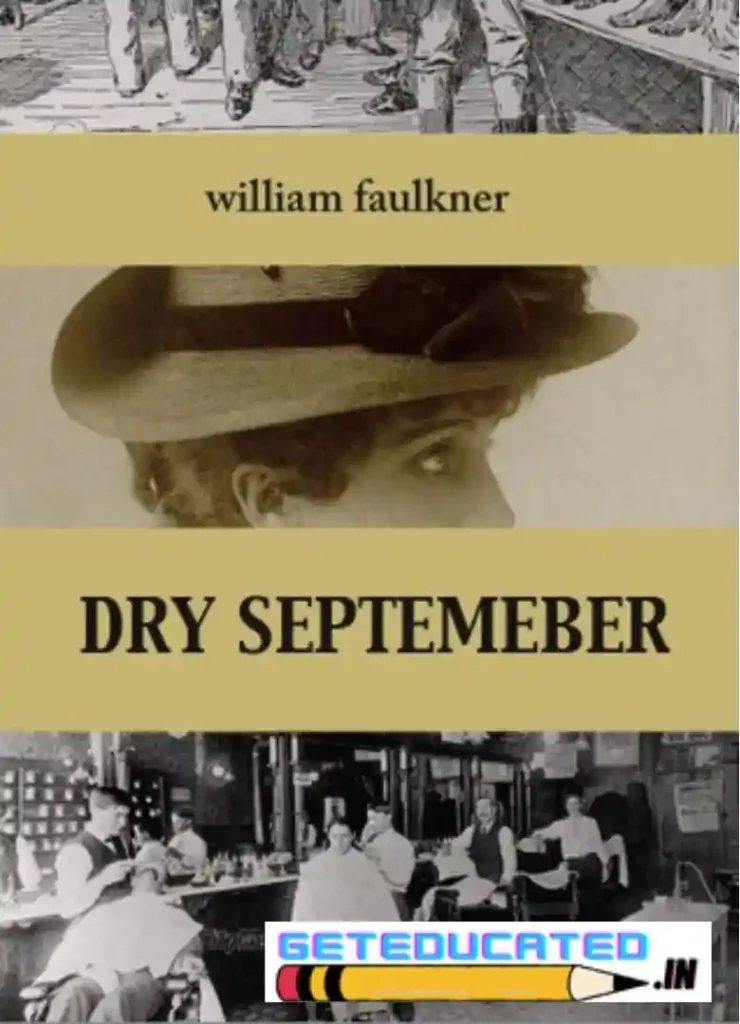
Like many of William Faulkner’s stories, ‘Dry September’ focuses on town gossip and its relation to the individual. But unlike ‘A Rose for Emily’, which explores the ways in which rumour surrounds an unmarried aristocratic woman living in the American South, ‘Dry September’ takes an even darker theme for its subject: racial prejudice and the lynching of black people in the Deep South.
“Dry September” shows us a late 1920s or early 1930s Mississippi town breaking under the weight of its outmoded social and class structures. In the days of slavery, the landowner with the biggest plantation and the most slaves was considered to be at the top of the social and class structure. At the bottom of the social structure were the slaves. The Civil War disrupted this structure, but the idea of it as the way things should be remained engraved in southern tradition for quite some time.
The story also explores the divisions within society along racial and gender lines. The lack of roles available to women, and the violent roles required of men are harshly critiqued. Because society is constantly changing, the roles of men and women are never stable, but constantly shifting and adapting to survive. “Dry September” shows how difficult those changes can sometimes be. While Mississippi is a real place, Faulkner’s Yoknapatawpha County and Jefferson are only based on real places. Still, since Faulkner spent the bulk of his life in Mississippi, he’s fictionalizing things he has seen and experienced in the racially charged, post-slavery, pre-Civil rights era American South.
Faulkner treats many of his characters as victims of various societal forces. Of course, Will Mayes is the most obvious victim. Faulkner’s story specifically exemplifies the ways in which whites used violence not to impose actual justice on society, but to maintain their own social dominance over blacks in the South. None of the men in the barber shop know what happened to Minnie Cooper, nor do they care about the details. In fact, when one man suggests that the group figure out if Mayes is actually guilty, the mob’s self-appointed leader McLendon responds, “What the hell difference does it make?” Their intention is not to indict and then punish Mayes for his actions, but to send a message to the black men of Jefferson and to reinforce the social structure of the South in the pre-Civil Rights era. To that end,
though the assault on Mayes is not described directly in the story, men in the main square spread the news that Mayes “went on a little trip.” This vague rumor serves as a cautionary tale to the other black men of the town, that the white men are not “going to let the black sons get away with it until one really does it.” Their threat is successful: as Minnie Cooper walks to the movie theater that evening, there was “not a Negro on the square. Not one.”
Beyond highlighting the prejudiced nature of vigilante “justice,” the story also reveals how such vigilantism can rob people of individual, rational thought. While McLendon is ultimately able to rally two cars of men to attack Mayes, there is initially some degree of doubt among those assembled in the barbershop regarding Mayes’s guilt. A few call for facts and evidence, with one attempting to calm the others down by noting that “We’ll get the facts in plenty of time to act.” Another questions the allegations themselves, asking, “Did it really happen?” Even as McLendon is able to persuade nearly all of the men in the barber shop to join him, many of them continue to express shame or discomfort about the decision. As some men get up to leave the shop, the others “sat uncomfortable, not looking at one another, then one by one they rose and joined.” The fact that the men go through with things despite doubts about the justice of their actions further points to the dangers of the mob mentality inculcated by vigilantism.
Henry Hawkshaw, the barber, stands out as a man of reason and integrity. He alone explicitly defends Mayes and argues against taking action, yet his words have little effect on the angry mob. Hawkshaw is certain from the beginning that Mayes is innocent, and is steadfast in his defense, noting, “I know Will Mayes… I know Miss Minnie Cooper, too.” This puts him in direct conflict with the prejudiced, vengeful McLendon, highlighting the contrast between the men to the point that they’re described as looking “like men of different races.” Hawkshaw decides to find the men after they leave the barber shop, presumably to convince them not to hurt Mayes, but he, too, is quickly swept up in the action. His repeated protests of “Listen, boys” become little more than background noise, as the men continue on their mission. He even inadvertently becomes involved in the abduction itself, when Mayes lashes out at the crowd of men “and the barber struck him also.”
Hawkshaw eventually realizes the futility of his actions and gives up his role as Mayes’s defender. His final action in the story is to escape, jumping from the moving vehicle and leaving the angry mob behind. The image of Hawkshaw as he “climbed back onto the road and limped on toward town” is one of a man who has tried, and failed, to impose reason. By presenting Hawkshaw’s efforts to curb the violence through appeals to thoughtful discourse futile, Faulkner ultimately argues that prejudiced vigilantism is inherently irrational.
The town of Jefferson is clearly ruled by a group of white men who feel empowered to take justice into their own hands. Their version of justice, however, is rooted in longstanding racism and the desire to maintain the traditional social structure of the pre-Civil War South. There is little room for differences of opinion, reason, or heroism in this highly-structured society, and men like Henry Hawkshaw are doomed to fail in their quest for true justice. Vigilantism in Faulker’s story, then, is not a means for justice at all, but rather the preservation of a specific (and deeply prejudiced) societal order.
As a Southern writer, Faulkner draws upon the mores and prejudices of his own regional culture to create unforgettable characters and settings for his novels and short stories. “Dry September” clearly shows the horrible miscarriages of justice that prejudice can cause. “Dry September” comes as close to poetry as T.S. Eliot’s “The Waste Land” comes to narrative, as Edmond Volpe in his book “ Reader’s guide to William Faulkner” suggests. It is developed around a central image of aridity, the story evolves into an extended metaphor, a haunting vision of the human being stretched to the breaking point, the pitiable victim of rigid sterile social traditions and of the moral sterility of an indifferent universe. In this expression of anger, horror, sorrow, and compassion for the human condition, Faulkner depends more
upon traditional narrative structure. As a Southern writer, Faulkner draws upon the mores and prejudices of his own regional culture to create unforgettable characters and settings for his novels and short stories. “Dry September” clearly shows the horrible miscarriages of justice that prejudice can cause.
